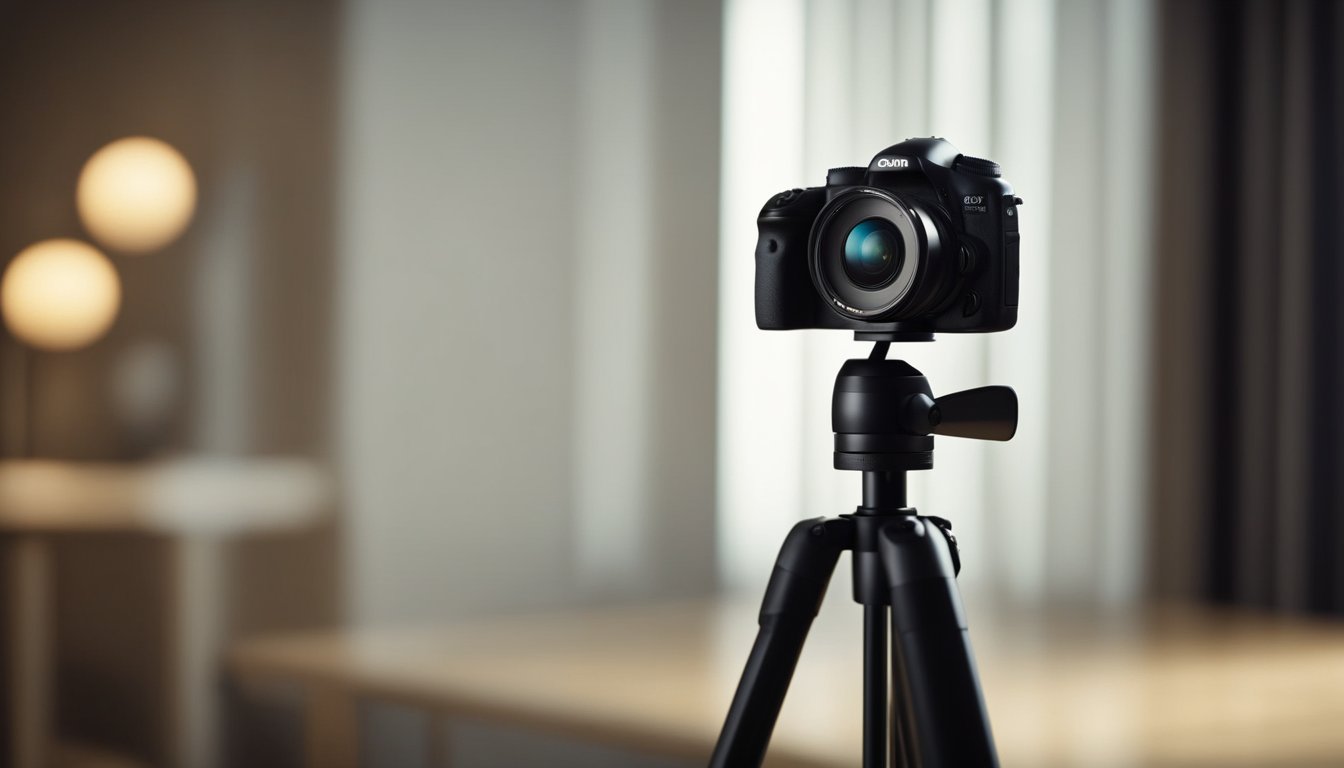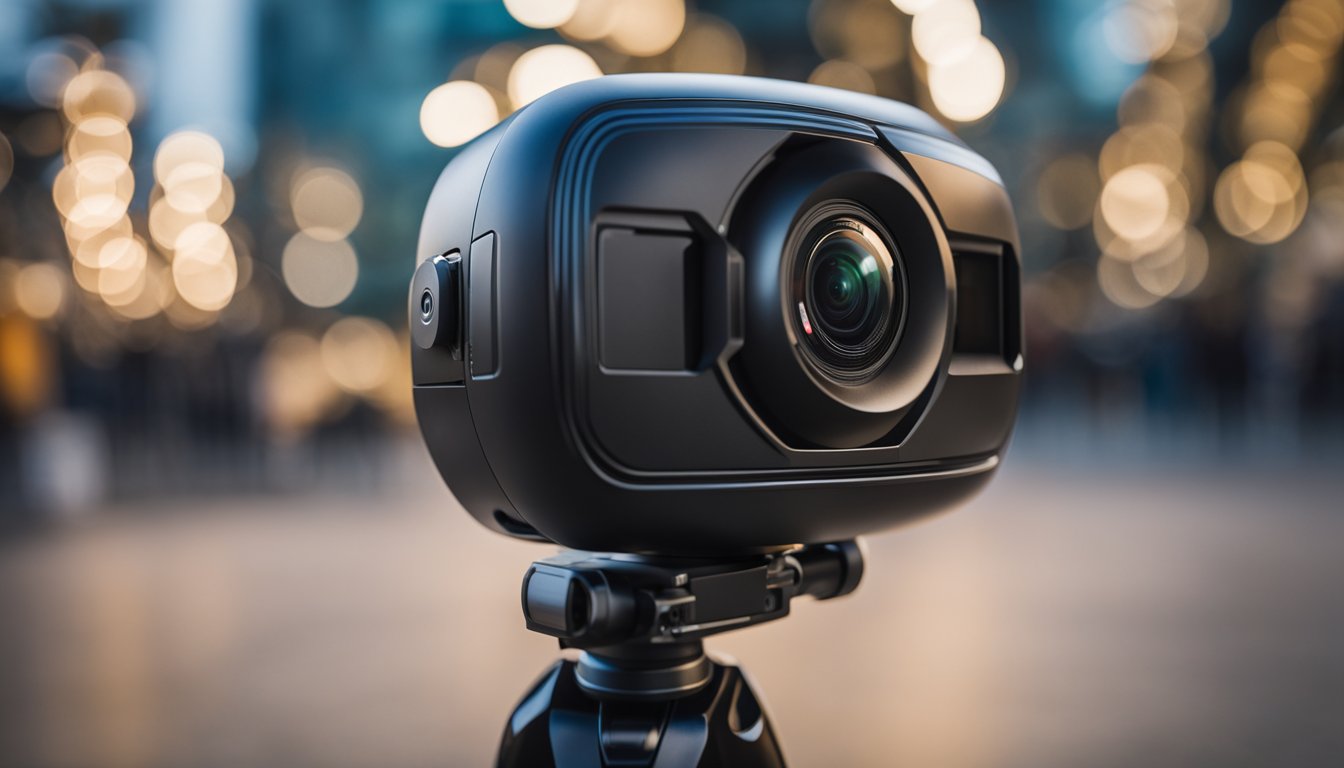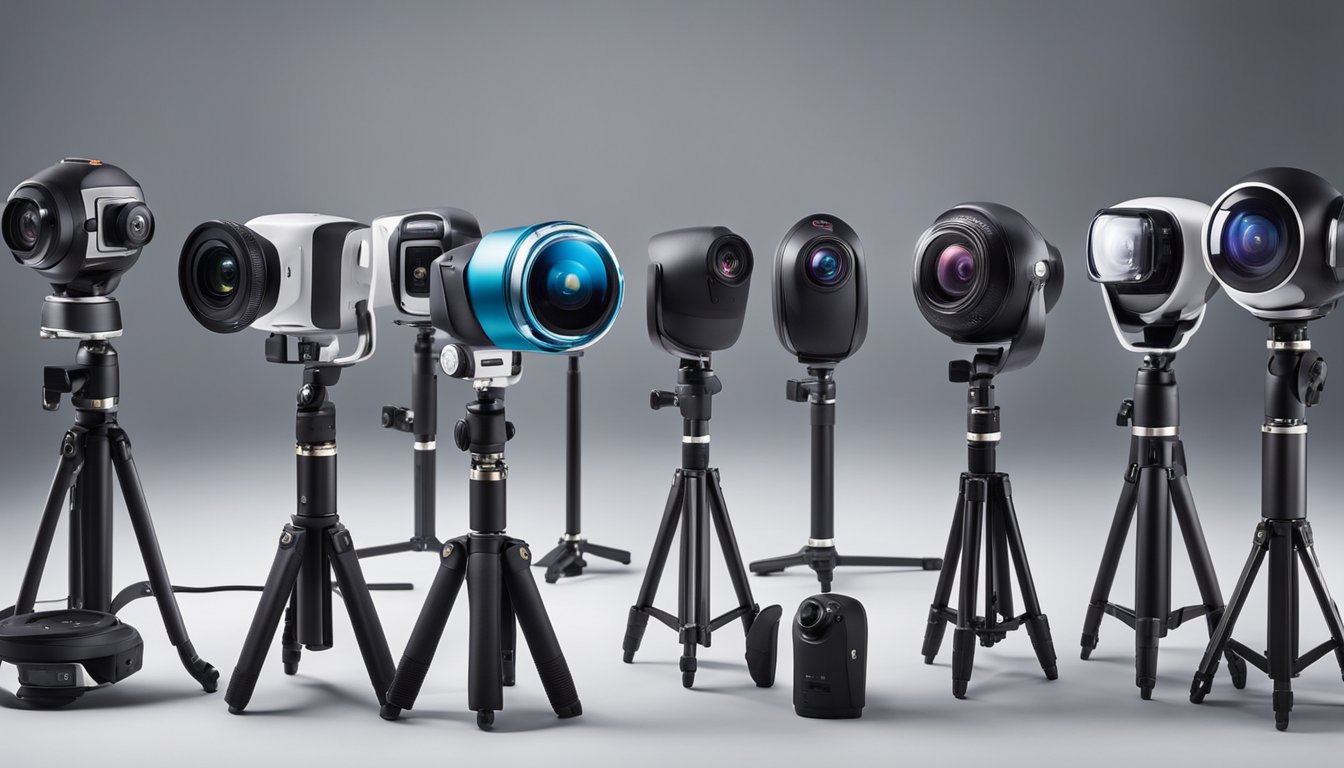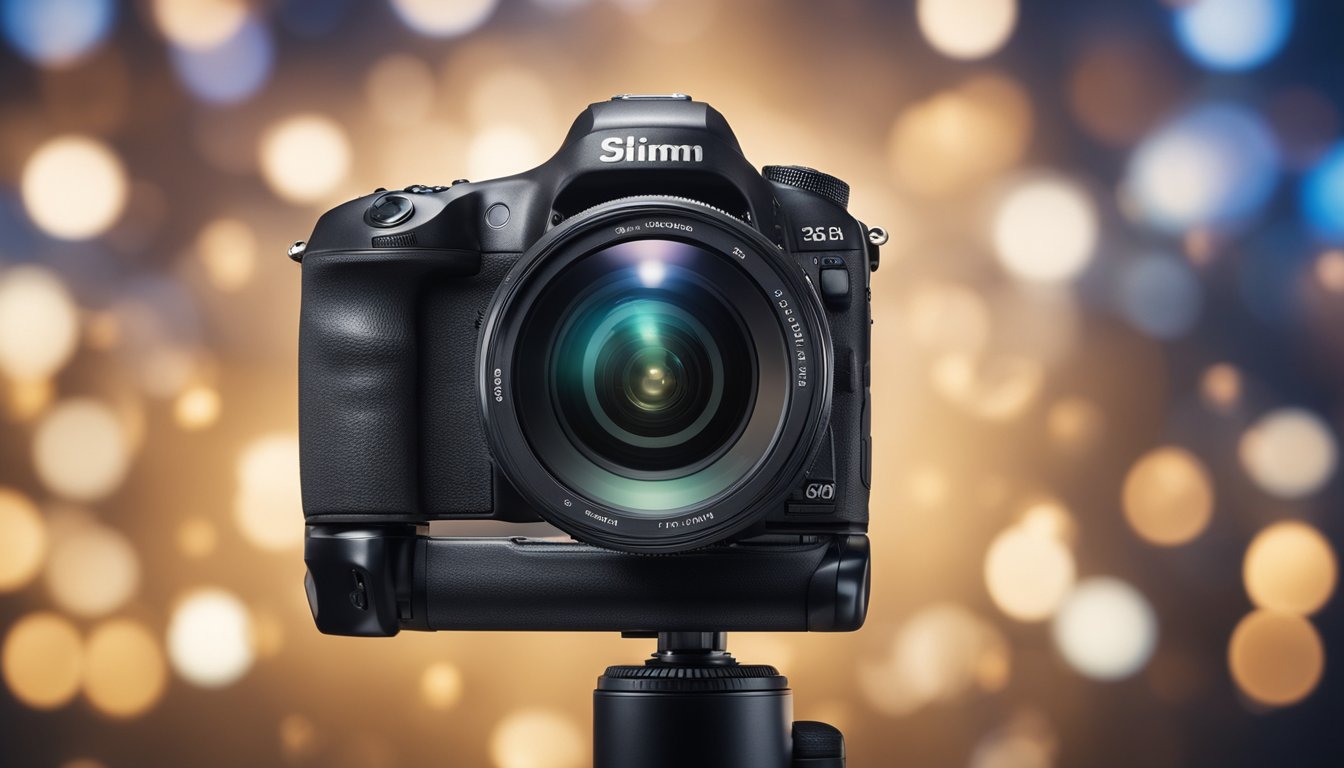If you’ve been keeping up with the latest trends in photography and videography, you may have heard of 360 cameras. These innovative devices allow you to capture a full 360-degree view of your surroundings, providing a unique and immersive viewing experience. But why is a camera 360? What makes this technology so special, and how can you use it to take your photography and videography to the next level?

360 cameras are designed to capture a full 360-degree view of your surroundings, allowing you to capture everything around you in a single shot. This technology is particularly useful for creating immersive virtual reality experiences, allowing viewers to feel like they’re actually in the scene. But 360 cameras aren’t just for VR; they can also be used to capture unique and interesting perspectives that would be impossible to achieve with a traditional camera.
Whether you’re a professional photographer or videographer, or simply looking to experiment with new technology, 360 cameras offer a range of exciting possibilities. In this article, we’ll take a closer look at what makes a camera 360, as well as some of the key features and benefits of this technology. We’ll also explore some of the most popular 360 camera models on the market, and provide tips and techniques for shooting and editing with these devices.

Understanding 360 Cameras
https://www.youtube.com/watch?v=WtAiEeZiYfs&embed=true
Basics of 360 Cameras
If you’re new to 360 cameras, you might be wondering what they are and how they work. A 360 camera is a camera that captures a 360-degree view of the world around it. It does this by using two or more lenses to capture images from different angles and then stitching these images together to create a seamless, spherical image. This allows you to capture everything around you, not just what’s in front of you.
One thing to keep in mind is that 360 cameras are different from traditional cameras. With a traditional camera, you typically have to frame your shot and point the camera in a specific direction. With a 360 camera, you can capture everything around you, so you don’t have to worry about framing your shot or missing anything important.
360 vs Traditional Cameras
There are some key differences between 360 cameras and traditional cameras. Here are a few things to keep in mind:
-
Field of view: With a traditional camera, you typically have a narrow field of view. This means that you can only capture a small portion of the world around you. With a 360 camera, you have a much wider field of view, so you can capture everything around you.
-
Perspective: With a traditional camera, you’re limited to a single perspective. This means that you can only capture things from one angle. With a 360 camera, you can capture things from multiple angles, which gives you more creative freedom.
-
Editing: With a traditional camera, you typically have to edit your photos or videos to add special effects or adjust the lighting. With a 360 camera, you can use software to add these effects and make adjustments after you’ve captured your footage.
Overall, 360 cameras are a great way to capture immersive images and videos that let you see the world in a whole new way. Whether you’re a professional photographer or just someone who loves taking photos and videos, a 360 camera is definitely worth considering.
Key Features of 360 Cameras
« Why Use 360 Camera: Capturing the Full Picture
360 Camera vs Reverse Camera: Which One is Right for You? »
360 cameras are becoming increasingly popular due to their ability to capture immersive photos and videos. These cameras offer a unique perspective that traditional cameras cannot match. Here are some key features of 360 cameras that make them stand out:
Lenses and Image Quality
360 cameras use multiple lenses to capture a 360-degree view of the surrounding environment. The number of lenses can vary from two to six or more, depending on the camera model. Each lens captures a portion of the environment, which is then stitched together to create a panoramic image.
When it comes to image quality, 360 cameras can capture high-resolution images with excellent detail and clarity. However, the quality of the final image depends on the number of lenses, the quality of the lenses, and the software used to stitch the images together. Some 360 cameras also offer manual settings to adjust exposure, white balance, and other settings to fine-tune the image quality.
Resolution and Video Quality
360 cameras can capture both photos and videos. The resolution of the camera determines the quality of the final image or video. Most 360 cameras can capture images with a resolution of 5K or higher, which is more than enough for most applications. However, some high-end cameras can capture images with a resolution of up to 11K.
When it comes to video quality, 360 cameras can capture videos in 4K or higher. The video quality depends on the resolution, frame rate, and bitrate of the video. Higher frame rates and bitrates result in smoother and more detailed videos. Some 360 cameras also offer features like image stabilization and HDR to improve the quality of the video.
In conclusion, 360 cameras offer a unique perspective that traditional cameras cannot match. They use multiple lenses to capture a 360-degree view of the surrounding environment and can capture high-resolution images and videos. The quality of the final image or video depends on the number and quality of the lenses, the software used to stitch the images together, and the camera’s resolution, frame rate, and bitrate.
Popular 360 Camera Models
If you’re interested in capturing immersive 360-degree photos and videos, you have plenty of options to choose from. Here are some of the most popular 360 camera models available today:
Insta360 Series
Insta360 is one of the most well-known brands in the 360 camera market. Their cameras are known for their high-quality images and videos, as well as their user-friendly interfaces. The Insta360 X3 is one of their most popular models, featuring 5.7K resolution and a compact design that makes it easy to take with you on the go. The Insta360 ONE X2 is another popular model, featuring 5.7K resolution, 360-degree audio, and a range of shooting modes to choose from.
GoPro Max and Others
GoPro is another popular brand in the 360 camera market, and their GoPro Max is one of the most popular models available. It features 360-degree video and photo capture, as well as HyperSmooth stabilization and a range of editing tools to help you create professional-looking content. Other popular 360 camera models include the Ricoh Theta Z1, which features a 1-inch sensor for high-quality images, and the Ricoh Theta SC2, which is a more budget-friendly option that still offers high-quality 360-degree photos and videos.
No matter which 360 camera model you choose, you can expect to capture stunning, immersive images and videos that will transport you to another world.
360 Cameras in Virtual Reality
https://www.youtube.com/watch?v=IFG2h8cFBQ4&embed=true
If you’re interested in virtual reality (VR), you’ve probably heard of 360 cameras. These cameras are essential for creating immersive 3D VR content. In this section, we’ll discuss how 360 cameras are used in VR and how they can help you create your own VR content.
VR Headsets and Content
VR headsets are the gateway to experiencing VR content. They allow you to immerse yourself in a virtual world and interact with it in a way that feels real. However, VR content isn’t just limited to games and simulations. 360 videos and photos are also a popular form of VR content.
To view 360 content, you need a headset that supports it. Most modern VR headsets, such as the Oculus Quest 2 and the HTC Vive, support 360 content. Once you have a headset, you can use it to explore 360 photos and videos. This allows you to experience different environments and scenes in a way that feels like you’re really there.
Creating VR Content
Creating VR content can be a daunting task, but 360 cameras make it much easier. These cameras capture a full 360-degree view of your environment, allowing you to create immersive VR experiences. You can use 360 cameras to capture photos and videos of your surroundings, which can then be used to create VR content.
When choosing a 360 camera, there are a few things to consider. First, you’ll want to look for a camera with high resolution. This will ensure that your content looks sharp and clear. You’ll also want to consider the camera’s field of view. A wider field of view will allow you to capture more of your environment.
Once you have your 360 camera, you can start capturing content. You can use your camera to capture 360 photos and videos of your surroundings. These can then be edited and used to create immersive VR experiences. There are many tools available for editing and creating VR content, so you can find one that works for you.
In conclusion, 360 cameras are an essential tool for creating immersive VR content. They allow you to capture your environment in a way that feels real and can be used to create amazing VR experiences. Whether you’re a professional VR content creator or just getting started, a 360 camera is a must-have tool.
Augmented Reality and 360 Cameras
https://www.youtube.com/watch?v=h3rKvsFTfPA&embed=true
If you’re interested in creating immersive AR experiences, a 360-degree camera can be a valuable tool. By capturing a full view of the environment, you can create a more realistic and interactive AR experience for your users.
AR Experiences with 360 Cameras
With a 360-degree camera, you can capture a full view of the environment, including people, objects, and landscapes. This can be useful for creating AR experiences that blend virtual and real-world elements seamlessly. For example, you could create an AR app that allows users to place virtual objects in a real-world environment, and then capture the experience using a 360-degree camera.
One of the benefits of using a 360-degree camera for AR is that it can capture a more immersive view of the environment. This can help to create a more realistic and engaging AR experience for users. Additionally, a 360-degree camera can capture a wider range of motion, which can be useful for creating AR experiences that require movement or interaction.
Overall, using a 360-degree camera for AR can help to create more engaging and immersive experiences for users. Whether you’re creating an AR app for entertainment, education, or business, a 360-degree camera can be a valuable tool for capturing the full view of the environment and creating a more realistic and interactive experience.
Shooting and Editing Techniques
https://www.youtube.com/watch?v=wsNL1Wfs5f0&embed=true
Stabilization and Reframing
When shooting 360 videos, it is important to keep the camera steady to avoid shaky footage. You can use a tripod or a stabilizer to keep the camera steady. Some 360 cameras come with built-in stabilization features that can help reduce shakiness in your footage. However, if you still end up with shaky footage, you can use post-processing software to stabilize your footage.
Another important aspect of shooting 360 videos is reframing. Reframing allows you to adjust the perspective of your footage to highlight specific areas or objects. This is especially useful when you want to draw the viewer’s attention to a particular detail within the 360 video. Reframing can be done during the shooting process or in post-processing software.
Post-Processing Software
Post-processing software allows you to edit your 360 videos after you have shot them. There are many software options available for both Mac and PC, such as Adobe Premiere Pro, Final Cut Pro X, and Pinnacle Studio. These software options offer a range of features, from basic editing tools to advanced effects.
One of the most important features of post-processing software for 360 videos is the ability to stitch footage together. Stitching is the process of combining multiple video streams into a single, seamless 360 video. Some 360 cameras come with built-in stitching features, but these may not always produce the best results. Using post-processing software to stitch your footage can result in a higher quality final product.
Other important features of post-processing software for 360 videos include color correction, audio editing, and special effects. With these tools, you can adjust the color balance of your footage, remove unwanted background noise, and add special effects to enhance the overall viewing experience.
Overall, mastering the art of shooting and editing 360 videos takes time and practice. By using the right equipment and software, and experimenting with different techniques, you can create immersive and engaging 360 videos that captivate your audience.
360 Cameras for Professionals
https://www.youtube.com/watch?v=hoJWwD1j9io&embed=true
If you are a professional in the fields of real estate, videography, photography, or content creation, a 360 camera can be a great tool to add to your kit. 360 cameras are capable of capturing immersive 360-degree footage, which can be used to create engaging and interactive content for your clients.
Real Estate and Videography
360 cameras are increasingly being used in the real estate industry to create virtual tours of properties. With a 360 camera, you can capture every angle of a room and create a virtual tour that allows potential buyers to explore the property from the comfort of their own home. This can save you time and money by reducing the need for in-person property viewings.
In addition to real estate, 360 cameras are also useful for videography. With a 360 camera, you can capture immersive footage of events, concerts, and other live performances. This can be a great way to create engaging content for your clients and provide them with a unique perspective on the event.
Photography and Content Creation
360 cameras are also useful for photographers and content creators. With a 360 camera, you can capture panoramic photos and create immersive virtual tours of locations. This can be a great way to showcase your work and provide your clients with a unique and interactive experience.
In addition to photography, 360 cameras are also useful for content creation. With a 360 camera, you can create engaging and interactive content for social media platforms like Facebook and Instagram. This can be a great way to increase engagement with your audience and stand out from the crowd.
Overall, if you are a professional in the fields of real estate, videography, photography, or content creation, a 360 camera can be a valuable tool to add to your kit. With its ability to capture immersive 360-degree footage, a 360 camera can help you create engaging and interactive content for your clients.
Social Media and 360 Cameras
https://www.youtube.com/watch?v=qExPe-nKdfI&embed=true
If you’re looking to share your 360 camera footage with the world, social media is the perfect platform. Many social media platforms support 360 videos, allowing you to share your immersive content with your followers.
Sharing on Platforms
YouTube and Facebook are two of the most popular platforms for sharing 360 videos. Both platforms allow you to upload 360 videos just like any other video. When you upload a 360 video, YouTube and Facebook will automatically detect that it’s a 360 video and allow viewers to pan around the video using their mouse or the gyroscope on their mobile device.
Engaging Viewers
360 videos are a great way to engage your viewers. With 360 videos, your viewers can explore your content in a way that’s not possible with traditional videos. You can use 360 videos to take your viewers on a virtual tour of a location, show off a product from all angles, or give them a unique perspective on an event.
To make your 360 videos even more engaging, consider adding interactive elements like hotspots. Hotspots are clickable areas within your video that can take your viewers to another part of the video or to an external website. This is a great way to provide additional information or call-to-actions within your video.
Overall, social media is a great way to share your 360 camera footage with the world. With the ability to upload and share 360 videos on platforms like YouTube and Facebook, you can take your viewers on an immersive journey and engage them like never before.
Accessories for 360 Cameras
https://www.youtube.com/watch?v=SnscHZp7-0k&embed=true
When it comes to 360 cameras, there are plenty of accessories that can enhance your experience and help you capture the best shots. Here are some of the most popular accessories for 360 cameras:
Monopods and Selfie Sticks
A monopod or selfie stick can be a great accessory for capturing 360 photos and videos. These accessories allow you to extend your reach and get a better angle on your shot. Some popular options include the Koolertron and the Telesin selfie stick. Another option is the invisible selfie stick, which is designed to be hidden in your shots to give the illusion that your camera is floating in space.
Drones and Mounts
If you want to capture aerial 360 shots, a drone is a great accessory to have. There are many drones on the market that are compatible with 360 cameras, such as the DJI Mavic Pro and the GoPro Karma. Additionally, there are many mounts available that allow you to attach your camera to various surfaces, such as a helmet or a bike handlebar.
Overall, there are many accessories available for 360 cameras that can help you capture the best shots. Whether you’re looking to extend your reach with a selfie stick or capture aerial shots with a drone, there’s an accessory out there for you.
Choosing the Right 360 Camera
https://www.youtube.com/watch?v=5MvtlBYOFHg&embed=true
When it comes to choosing the right 360 camera, there are a few factors to consider. In this section, we’ll cover two important factors: budget considerations and reviews and performance.
Budget Considerations
When it comes to buying a 360 camera, your budget is an important factor to consider. There are 360 cameras available at various price points, ranging from budget-friendly options to high-end models. Consider how much you’re willing to spend and what features are important to you.
If you’re on a tight budget, there are several budget-friendly 360 cameras available that still offer decent performance. For example, the Insta360 ONE X2 is a budget-friendly option that offers good image quality and a range of features.
On the other hand, if you’re willing to spend more, there are high-end 360 cameras available that offer even better performance and features. For example, the GoPro MAX is a high-end option that offers excellent image quality and a range of advanced features.
Reviews and Performance
When choosing a 360 camera, it’s important to consider reviews and performance. Look for cameras that have good reviews and ratings from other users, as this can be a good indication of their performance.
When it comes to performance, consider factors such as image quality, stabilization, and ease of use. Look for cameras that offer good image quality, as this is one of the most important factors when it comes to capturing 360-degree photos and videos.
In addition, look for cameras that offer good stabilization, as this can help reduce motion blur and make your photos and videos look smoother. Finally, consider the ease of use of the camera, as this can make a big difference in how often you use it.
Some of the best 360 cameras on the market include the Insta360 ONE R, the GoPro MAX, and the Ricoh Theta Z1. These cameras offer good performance and a range of features, making them a great choice for anyone looking to capture 360-degree photos and videos.
Technical Aspects of 360 Cameras
https://www.youtube.com/watch?v=xqWkJJOcU4g&embed=true
When it comes to 360 cameras, there are several technical aspects to consider. In this section, we will discuss two important aspects: connectivity and storage, and hardware and software.
Connectivity and Storage
Most 360 cameras come equipped with Wi-Fi connectivity, which allows you to connect your camera to your smartphone or tablet. This is useful for transferring photos and videos from your camera to your device, as well as for remote control of your camera. Some cameras also come with Bluetooth connectivity, which can be useful for connecting to other devices, such as a wireless shutter release.
In terms of storage, most 360 cameras use an SD card to store photos and videos. It is important to choose an SD card with a high write speed, as 360-degree videos can be large files and require a lot of storage space. Some cameras also have built-in storage, which can be useful if you forget to bring an SD card or run out of space on your card.
Hardware and Software
The hardware and software of 360 cameras are also important to consider. The lenses of a 360 camera are typically fisheye lenses that capture a 180-degree field of view. These lenses capture two images simultaneously, which are then stitched together to create a 360-degree image or video.
The software of a 360 camera is responsible for stitching together the two images captured by the camera’s lenses. Some cameras have built-in stitching software, while others require you to use third-party software to stitch the images together. It is important to choose a camera with good stitching software, as this can affect the quality of your final image or video.
In terms of hardware, some 360 cameras come with built-in stabilization, which can help to reduce camera shake and produce smoother videos. Other cameras may have built-in GPS, which can be useful for geotagging your photos and videos.
Overall, when choosing a 360 camera, it is important to consider the connectivity and storage options, as well as the hardware and software features. By doing so, you can ensure that you choose a camera that meets your needs and produces high-quality 360-degree photos and videos.
Frequently Asked Questions
What are the benefits of using a 360 camera compared to a traditional camera?
360 cameras offer a more immersive experience by capturing a full 360-degree view of your surroundings. They allow you to capture everything around you in a single shot, eliminating the need for multiple cameras or shots. Additionally, 360 cameras offer greater flexibility in post-processing, allowing you to crop and edit the image or video to your liking.
How does a 360 camera work and what can it capture?
A 360 camera works by using multiple lenses to capture a full 360-degree view of your surroundings. These lenses capture images simultaneously, which are then stitched together to create a seamless panoramic view. A 360 camera can capture everything around you, including the sky and the ground, making it ideal for capturing immersive videos and photos.
What should I consider when choosing the best 360 camera for my needs?
When choosing a 360 camera, you should consider factors such as image and video quality, ease of use, battery life, and compatibility with your device. You should also consider the camera’s resolution, frame rate, and stabilization features, as these can greatly affect the quality of your images and videos.
Are there any cost-effective yet high-quality 360 camera options available?
Yes, there are several cost-effective 360 camera options available that offer high-quality images and videos. Some popular options include the Insta360 One R, the Ricoh Theta SC2, and the GoPro Max.
What are the advantages of using a 360 camera for car security?
360 cameras can be used for car security by capturing a full 360-degree view of your car’s surroundings. This can help you monitor your car and prevent theft or damage. Additionally, some 360 cameras come with motion detection features that can alert you if there is any movement around your car.
How user-friendly are the 360 camera apps for Android and iPhone?
Most 360 camera apps for Android and iPhone are user-friendly and easy to navigate. They offer features such as live streaming, editing tools, and social media sharing options. Some popular 360 camera apps include the Insta360 app, the Ricoh Theta app, and the GoPro app.













